Conjunctival Flap Corneal Ulcer

Conjunctival Pedicle Grafting Of The Cornea Information

Management Of Inflammatory Corneal Melt Leading To Central Perforation In Children A Retrospective Study And Review Of Literature Eye
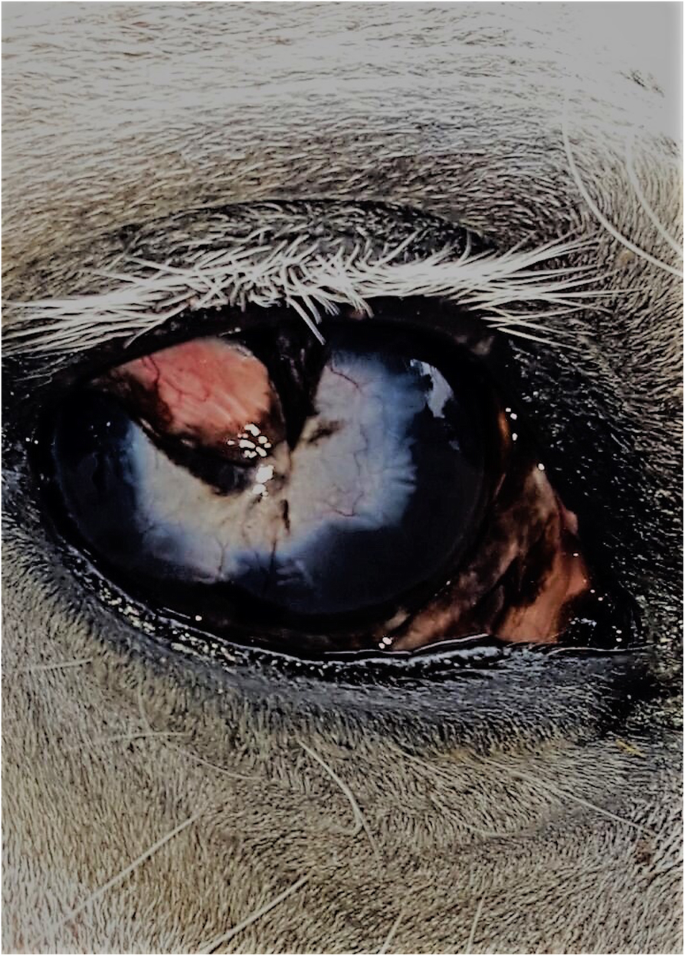
Use Of Autologous Fascia Lata Graft To Repair A Complex Corneal Ulcer In A Mare Irish Veterinary Journal Full Text

Equine Corneal Ulcer Article Baker Mcveigh
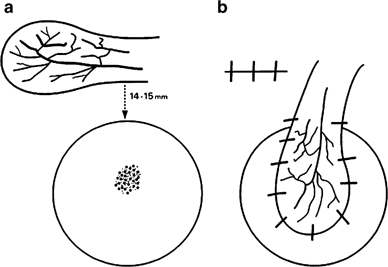
Superior Forniceal Conjunctival Advancement Pedicles Sfcap In The Management Of Acute And Impending Corneal Perforations Eye

Equine Corneal Ulcer Article Baker Mcveigh
Deep corneal ulcers All corneal wounds are referred to as ‘corneal ulcers’ There are many reasons why a patient may develop a corneal ulcer – including trauma, infection, rubbing from inturned eyelids and dry eye.
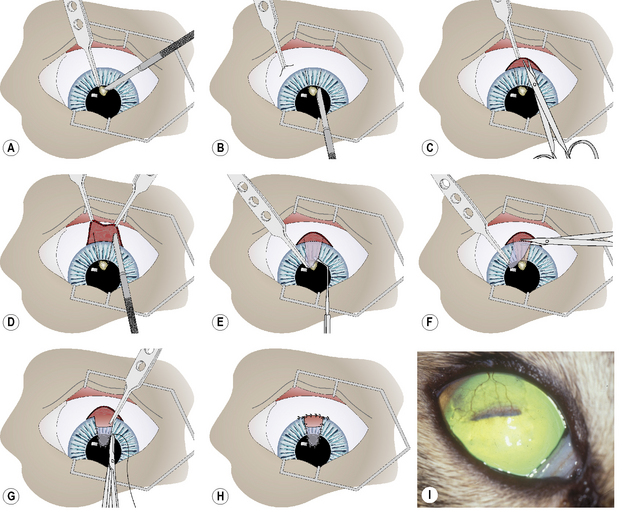
Conjunctival flap corneal ulcer. Partial flap over a localized area of non healing corneal ulcer 2 May retract but advantages include continued visualization of portions of anterior segment V List the complications of the procedure, their prevention and management A Intraoperative 1 Buttonhole formation in conjunctival flap a Prevention i Careful dissection b. The Gundersen conjunctival flap procedure involves the transposition of a thin flap of conjunctiva to cover the cornea for the relief of painful ocular surface disorders or to provide metabolic support for corneal healingA Gundersen flap, also known as Gundersen\'s flap, Gundersen\'s conjunctival flap, or conjunctivoplasty, and often misspelled Gunderson, is a surgical procedure for correcting corneal disease. Conjunctival flap has been confirmed to be a simple, wellsupported, shortterm treatment for managing corneal perforation or impending perforation in infective corneal ulcers 12–14 However, it is not recommended for the Mooren’s ulcer, a peripheral autoimmunerelated ulcerative corneal diseases.
Observations An 80yearold woman treated with Nivolumab for metastatic melanoma developed an intractable corneal ulcer in her left eye, refractory to all therapies including surgery to cover the ulcer with a conjunctival flap until topical prednisolone acetate was tried, which was curative. The graft was freely dissected from the ventral palpebral conjunctiva and was sutured to the edge of the deep corneal ulcer with 8/0 Vicryl suture material The eye was covered by a third eyelid flap for two weeks Postoperative management was achieved with topical antibiotics and atropine and systemic nonsteroids. The criteria for enrollment in the study were clinical evidence of corneal ulcer that was unresponsive to conventional therapy and the presence of corneal and conjunctival anesthesia.
If the defect is deep enough it may require surgical repair including suturing and/or conjunctival flap As mentioned, infection is the most common cause of corneal ulcer, and most simple, superficial ulcers will heal with appropriate antibiotic and/or antifungal medication Often we use autologous serum as treatment for corneal ulcers To obtain autologous serum we take a blood sample from the patient or another dog or cat known to be healthy. If you can not easily get the conjunctival flap down to the inferior limbus then make an inferior peritomy, undermine, and bring up the lower bulbar conjunctiva to cover the inferior 2 3 mm of cornea You can also do a 360 degree peritomy with relaxing incisions I like 100 nylon sutures either interrupted, running, or both. 1 Indian J Ophthalmol 19 Jul;30(4)3512 Conjunctival flap in perforated corneal ulcers (A review of cases) Srivastava US, Tyagi RN, Jain AK.
Deep corneal ulcers All corneal wounds are referred to as ‘corneal ulcers’ There are many reasons why a patient may develop a corneal ulcer – including trauma, infection, rubbing from inturned eyelids and dry eye. A corneal ulcer is an ocular emergency that raises highstakes questions about diagnosis and management Four corneal experts provide a guide to diagnostic differentiators and timely treatment, focusing on the types of ulcers most likely to appear in your waiting room. With appropriate therapy they typically heal in 3 to 5 days, depending on their initial size Ulcers that persist beyond 5 to 7 days with little improvement despite therapy are considered refractory.
If the conjunctival flap is being prepared for a perforated corneal ulcer, tissue from the Tenon capsule is mobilized along with the conjunctiva Care is taken to preserve the vascular supply of the flap as much as possible The flap is then secured to the cornea using 100 monofilament nylon sutures. Surgical application of a ‘conjunctival flap’ is necessary to prevent this occurrence This procedure involves attaching a portion of the pink tissue which surrounds the eye, directly onto the ulcer, creating a flap This flap not only provides protection, but supplies blood directly to the site, aiding the healing process. Corneal ulcers 1 In our patient, conjunctival flap was performed for resistant fungal corneal ulcer In general, CFs promote wound healing and improve comfort CFs promote healing of refractory.
• Conjunctival pedicle graft The conjunctiva is a thin pink layer which covers the white of the eye It is strong and contains blood vessels, and therefore is a good option to use to repair nearby corneal ulcers A flap of conjunctiva is raised, leaving it attached at it’s base, and it is sutured into the ulcerated area using an. When the infection is under control and the ulcerated area needs support conjunctival flap or corneaconjunctival transposition The "Melting" Ulcer The melting refers to the breakdown of the corneal collagen lamellae due to protease, hydrolase and collagenase activities. References Yang, G, Espandar, L, Mamalis, N and Prestwich, G D (10) A cross linked hyaluronan gel accelerates healing of corneal epithelial abrasion and alkali burn injuries in.
Conjunctival flap has been confirmed to be a simple, wellsupported, shortterm treatment for managing corneal perforation or impending perforation in infective corneal ulcers 12,13,14 However, it is not recommended for the Mooren’s ulcer, a peripheral autoimmunerelated ulcerative corneal diseases. The graft was freely dissected from the ventral palpebral conjunctiva and was sutured to the edge of the deep corneal ulcer with 8/0 Vicryl suture material The eye was covered by a third eyelid flap for two weeks Postoperative management was achieved with topical antibiotics and atropine and systemic nonsteroids. Conjunctival flaps have been used to halt progression of a refractory pseudomonas corneal abscess 10 This is a useful technique in eyes with poor visual potential and a delayed healing rate after both infectious and sterile corneal ulcers A conjunctival flap was used to treat such keratitis occurring in the region of the corneal incisions in a patient after radial keratotomy 11 Flaps have been promoted for treatment of fungal keratitis resistant to medical treatment 12 This approach may.
Neurotrophic keratitis ( NK) is a degenerative disease of the cornea caused by damage of the trigeminal nerve, which results in impairment of corneal sensitivity, spontaneous corneal epithelium breakdown, poor corneal healing and development of corneal ulceration, melting and perforation This is because, in addition to the primary sensory role, the nerve also plays a role maintaining the integrity of the cornea by supplying it with trophic factors and regulating tissue metabolism. The pedicle conjunctival flap can be used either as a thin flap (without Tenon's capsule) for superficial corneal ulcer, or as a thick flap (with Tenon's capsule) for deep corneal ulcer Therefore, the pedicle conjunctival flap can restore ocular surface integrity and provide metabolic and mechanical support for corneal ulcer. Corneal lesions The conjunctival flap was fully separated toward both ends until it could be pulled to the corneal lesions without tension, and the eyeball could move freely towards all directions Finally, the conjunctival flap was rotated to cover the entire corneal lesions A 10–0 monofilament nylon suture was used to secure the flap with a certain tension (Figure 2F and F’) Any effusion beneath the conjunctival flap should be drive out with a.
The graft was freely dissected from the ventral palpebral conjunctiva and was sutured to the edge of the deep corneal ulcer with 8/0 Vicryl suture material The eye was covered by a third eyelid flap for two weeks Postoperative management was achieved with topical antibiotics and atropine and systemic nonsteroids. The conjunctival flap has been demonstrated to be a simple, wellsupported, shortterm treatment for the management of corneal perforation or impending perforation in infective corneal ulcers It also provides mechanical support for the corneal ulceration to heal. Conjunctival flap has been confirmed to be a simple, wellsupported, shortterm treatment for managing corneal perforation or impending perforation in infective corneal ulcers 12–14 However, it is not recommended for the Mooren’s ulcer, a peripheral autoimmunerelated ulcerative corneal diseases.
Conjunctival flaps have been used to halt progression of a refractory pseudomonas corneal abscess 10 This is a useful technique in eyes with poor visual potential and a delayed healing rate after both infectious and sterile corneal ulcers A conjunctival flap was used to treat such keratitis occurring in the region of the corneal incisions in a patient after radial keratotomy 11 Flaps have been promoted for treatment of fungal keratitis resistant to medical treatment 12 This approach may. Corneal ulceration, or a break in the corneal epithelium, can occur for a variety of reasons Common etiologies include trauma, entropion, ocular foreign bodies, and dry eye disease Most corneal ulcers are superficial and noninfected;. Conclusions Conjunctival flap cover surgery is an underused technique Its primary indication is refractory corneal ulcer and corneal perforation, and its second indication is aesthetic with poor visual potential coexisting ocular surface diseases It represents an interesting alternative to more mutilating surgeries.
A corneal ulcer is a break in the outer epithelium of the cornea If the outer epithelium alone is breached, the ulcer is superficial If the ulcer is deeper, a certain amount of the underlying stroma is also missing, and the ulcer is deeper Why should I worry about a corneal ulcer?. 1 Indian J Ophthalmol 19 Jul;30(4)3512 Conjunctival flap in perforated corneal ulcers (A review of cases) Srivastava US, Tyagi RN, Jain AK. Purpose To describe a case of corneal ulceration associated with Nivolumab use Observations An 80yearold woman treated with Nivolumab for metastatic melanoma developed an intractable corneal ulcer in her left eye, refractory to all therapies including surgery to cover the ulcer with a conjunctival flap until topical prednisolone acetate was tried, which was curative.
Blow up the superior bulbar conjunctiva but do not pierce the conjunctiva in the areas to be used for the flap Next gently remove the entire corneal epithelium either with a # 15 blade or a sterile cotton applicator ( Q tip ) wet with BSS, or a topical antibiotic, or 5% povidine iodine ( Betadine ) or diluted rubbing ( isopropyl ) alcohol. If the defect is deep enough it may require surgical repair including suturing and/or conjunctival flap As mentioned, infection is the most common cause of corneal ulcer, and most simple, superficial ulcers will heal with appropriate antibiotic and/or antifungal medication Often we use autologous serum as treatment for corneal ulcers To. Results Conjunctival chemosis was observed in 14 out of 16 cases of Pseudomonas aeruginosarelated corneal ulcers, as compared with 6 out of 46 cases caused by other organisms The association between conjunctival chemosis and Pseudomonas aeruginosa is statistically significant, with P value.
So when Bayer market Sentrx Remend in the UK, look out for David’s Magic Drops for corneal ulcers and dry eye in the canine eye and try them out for yourself!. A corneal ulcer is an open sore on your cornea, the thin clear layer over your iris (the colored part of your eye) It’s also known as keratitis. In very deep corneal ulcers or perforations, conjunctival tissue may not be strong enough to provide good structural support to maintain corneal integrity and watertightness Recurrent problems are possible (Figure 7) It also results in significant scarring as the conjunctival tissue is.
With appropriate therapy they typically heal in 3 to 5 days, depending on their initial size. Conjunctival flap viable option for chronic corneal ulcer Perforated and nonperforated corneal ulcers that have not responded to medical therapies might respond to a selective pedunculated. The pedicle conjunctival flap can be used either as a thin flap (without Tenon's capsule) for superficial corneal ulcer, or as a thick flap (with Tenon's capsule) for deep corneal ulcer Therefore, the pedicle conjunctival flap can restore ocular surface integrity and provide metabolic and mechanical support for corneal ulcer.
Infectious corneal ulcers are typically caused by secondary bacteria, or less frequently a fungal infection, that triggers corneal stromal destruction Different simultaneous underlying problems such as low corneal sensation, tear film deficiencies and/or eyelid abnormalities can further weaken the cornea and act as contributing factors delaying the corneal healing. The purpose of a conjunctival flap is to restore the integrity of a chronically compromised corneal surface, 63,64 and provide metabolic and mechanical support for corneal healing 63,65 They do not add tectonic support and should not be used in very thin or perforated corneas Conjunctival flaps act as biologic patches, conferring a trophic effect because of the nutritional and immunologic supply by its vascular connective tissue. Conjunctival Flap GraftTechnique which sutures a portion of the conjunctiva (pink tissue surrounding the eye) to the cornea for the treatment of deep corneal ulcers Doing so provides an immediate blood supply to the damaged area to speed healing and increase the amount of medication that reaches the area (Figure 15).
The exposed area of necrotic corneal stroma where the conjunctival flap had dehisced was debrided and the malacic cornea removed using a No 64 Beaver blade and Colibri corneal forceps To ensure removal of all the necrotic stroma, a keratectomy greater than 3/4 of the corneal thickness was carried out by dissection to leave a 30 mm diameter corneal defect as the bed for grafting. Conjunctival Flap GraftTechnique which sutures a portion of the conjunctiva (pink tissue surrounding the eye) to the cornea for the treatment of deep corneal ulcers Doing so provides an immediate blood supply to the damaged area to speed healing and increase the amount of medication that reaches the area (Figure 15). To report a case of conjunctival autotransplantation using the conjunctival flap of the pterygium for thetreatment corneal ulcer perforation Case summary A 72yearold woman was referred to our hospital because her left eye had a corneal ulcer due topine needle trauma, and she did not respond to the initial therapy in a private clinic for 1 week.
Corneal ulceration, or a break in the corneal epithelium, can occur for a variety of reasons Common etiologies include trauma, entropion, ocular foreign bodies, and dry eye disease Most corneal ulcers are superficial and noninfected;. The top panel is an eye suffering from corneal ulcer and descemetocele (arrow) following a glaucoma shunt procedure and pseudomonas infection After multiple layers of cryopreserved AM, the eye regained vision of /70 seven months later The bottom panel is an eye developing infective keratitis following. Surgical application of a ‘conjunctival flap’ is necessary to prevent this occurrence This procedure involves attaching a portion of the pink tissue which surrounds the eye, directly onto the ulcer, creating a flap This flap not only provides protection, but supplies blood directly to the site, aiding the healing process.
Conjunctival resection can be considered for treating marginal corneal ulcerations secondary to autoimmune diseases such as those related to collagen vascular diseases or Mooren’s ulcer Approximately 3 mm of conjunctiva is excised posterior to the corneoscleral limbus and parallel to the ulcer. After removing the epithelium from the area around the ulcer and the adjacent limbus, she sutures the conjunctival flap to the denuded area Amniotic membrane According to Dr Tu, amniotic membrane can be useful for nontraumatic corneal perforations with loss of stroma, small perforations, impending perforations when the stroma melts away without a catastrophic entrance into the eye, and descemetoceles. The conjunctiva is the pale pink tissue that covers the ‘white’ of the eye It is a thin, strong tissue containing many blood vessels These properties make it a useful graft material for corneal ulcers Conjunctival pedicle grafting is performed with the aid of an operating microscope.
Conjunctival and episcleral injection are present along with deep vessels in the base of the ulcer A characteristic overhanging central ulcer margin is also seen (B) Total peripheral Mooren’s ulcer with an edematous, opacified central cornea (C) Complete Mooren’s ulcer where a fibrovascular membrane has replaced the corneal stroma. The conjunctival flap is an acknowledged surgery for the treatment of various corneal diseases with a chronically compromised ocular surface, such as severe dry eye, neuro trophic or neuroparalytic disease, or bullous keratopathy The purpose of this surgery is to restore the integrity of the corneal. A conjunctival flap provides a regular surface and eradicates significant irritation caused by the sensitive cornea, and therefore make it easy to coordinate the prosthesis In addition, conjunctival flap has other advantages such as good cosmetic appearance, relieved pain, and no need to invasive surgery or enucleation The indications include atrophy of eyeball for 45 eyes out of 253 patients (178%) and corneal leukoma with no useful vision for 18 eyes out of 253 patients (71%) in our.
The pedicle conjunctival flap can be used either as a thin flap (without Tenon's capsule) for superficial corneal ulcer, or as a thick flap (with Tenon's capsule) for deep corneal ulcer Therefore, the pedicle conjunctival flap can restore ocular surface integrity and provide metabolic and mechanical support for corneal ulcer. • Conjunctival pedicle graft The conjunctiva is a thin pink layer which covers the white of the eye It is strong and contains blood vessels, and therefore is a good option to use to repair nearby corneal ulcers A flap of conjunctiva is raised, leaving it attached at it’s base, and it is sutured into the ulcerated area using an. Simple ulcers can be treated with prescription eye drops Complex ulcers typically require surgical intervention to remove the damaged or diseased portion of the cornea Our experienced veterinary team provides advanced surgical options for corneal ulcers such as corneal diamond burr debridement and corneal conjunctival flap or graft As veterinary eye specialists, we are able to tailor the proper treatment to your pet.
The Conjunctival Flap or Graft Procedure Conjunctival flap grafting is one option for the treatment of deep corneal ulcers The conjunctiva is the pale pink tissue that covers the “white” of your pet’s eye It is a thin and strong tissue which contains many blood vessels These qualities make it an ideal tissue for grafting purposes Conjunctival flap or grafting surgery is performed under general anesthesia. An injection was given below the corneal limbus at the site planned so as to easily cover the ulcer About half a centimetre broad conjunctival flap was created The flap was pulled over the ulcer and fixed by giving three sutures with chronic catgut zero (0) at upper bulbar conjunctiva. Conjunctival flap therapy This treatment involves suturing the dog's third eyelid, located under the lower eyelid, to the inside of the upper eyelid, creating a cover for the cornea This protects the wound while it heals and provides it with moisture from the third eyelid.
Amniotic membrane transplantation may be used as a temporary patch or a permanent graft to promote healing and decrease inflammation and scarring, but it is not feasible if the area to be treated is large and the ratio of dissolution is relatively high in severe fungal keratitis cases presenting with a whole corneal ulcer Conjunctival flaps have been used to halt the progression of refractory corneal abscesses, which are resistant to medical therapy.

Deep Stromal Corneal Ulcers Descemetocele And Iris Prolapse In Animals Emergency Medicine And Critical Care Merck Veterinary Manual

J Ophthalmol Ukraine 19 4 18 22 Oftalmologicheskij Zhurnal

Pdf Rapid Deterioration Of Mooren S Ulcers After Conjunctival Flap A Review Of 2 Cases

Conjunctival Flap Covering Combined With Antiviral And Steroid Therapy For Severe Herpes Simplex Virus Necrotizing Stromal Keratitis
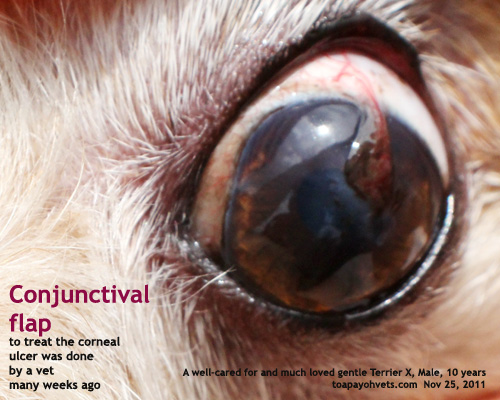
Canine Dog Veterinary Surgery Anaesthesiaveterinary Surgery Anaesthesia Singapore Toa Payoh Vets Hamster Medicine Surgery Cases Health Sickness Singapore Singapore Toa Payoh Vets

Conjunctival Flap Cover Surgery 10 Year Review Yao Annals Of Eye Science

Conjunctival Flap Cover Surgery 10 Year Review Yao Annals Of Eye Science
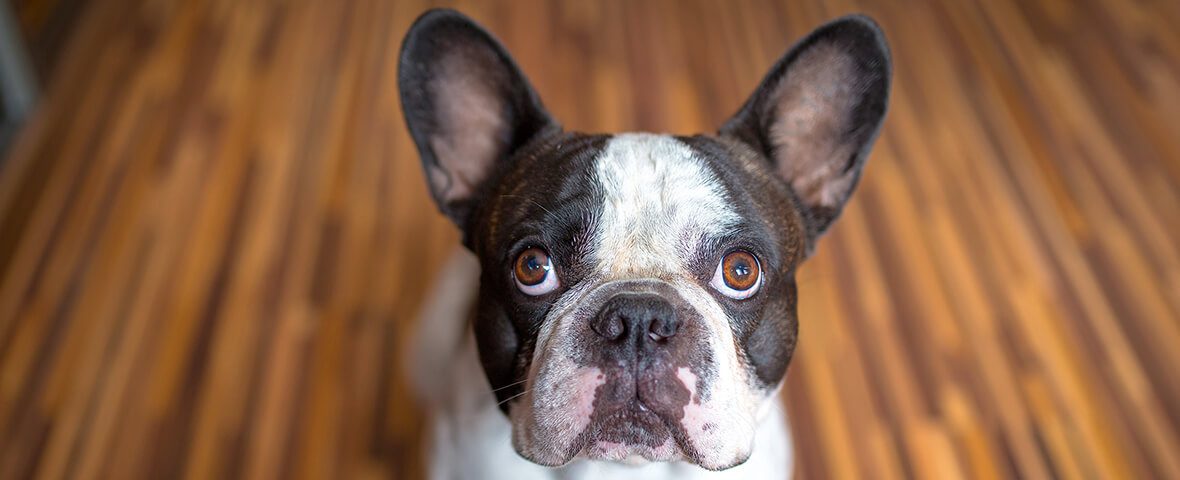
Corneal Ulcers Bluepearl Pet Hospital
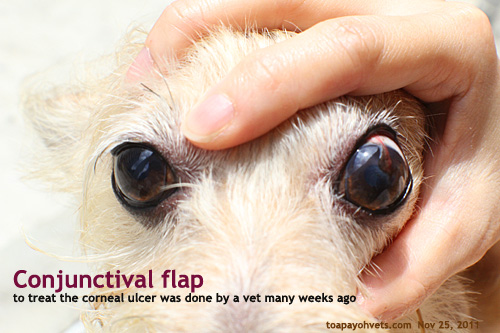
Canine Dog Veterinary Surgery Anaesthesiaveterinary Surgery Anaesthesia Singapore Toa Payoh Vets Hamster Medicine Surgery Cases Health Sickness Singapore Singapore Toa Payoh Vets

Full Text Neurotrophic Keratitis Current Challenges And Future Prospects Eb

A Pain In The Eye Corneal Ulcers In Horses

The Challenging Approach To A Combined Neurotrophic And Exposure Corneal Ulcer
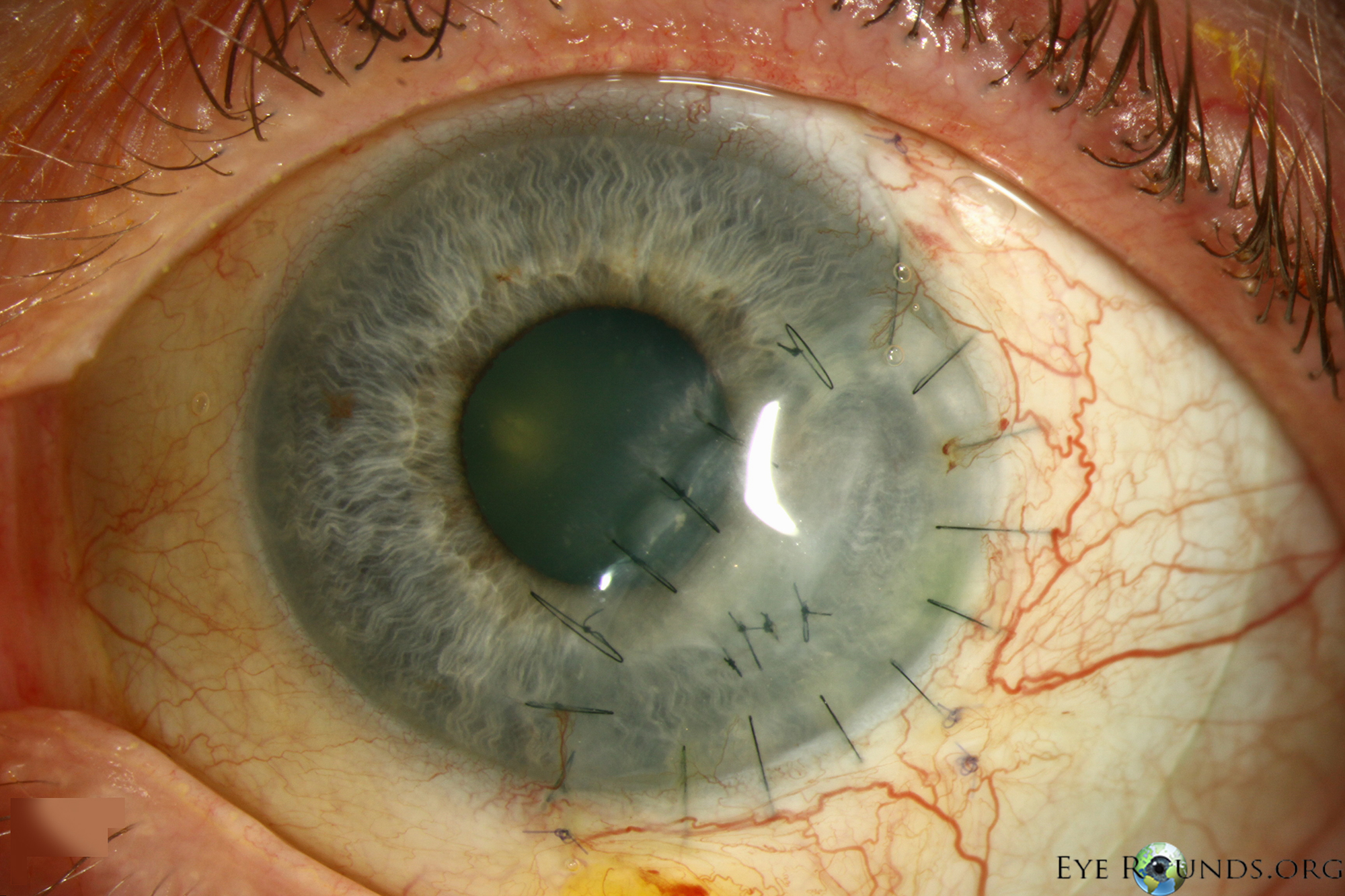
Peripheral Ulcerative Keratitis Puk

Modified Conjunctival Flap As A Primary Procedure For Nontraumatic Acute Corneal Perforation Sun Yc Kam Jp Shen Tt Tzu Chi Med J

Clinical Photographs Illustrating Two Cases Of Mooren S Ulcer That Download Scientific Diagram

Djo Digital Journal Of Ophthalmology

Corneal Grafts Davies Veterinary Specialists

Deep Corneal Ulceration And Corneal Grafting Procedures

Ten Tenets One Should Know On Conjunctival Hooding
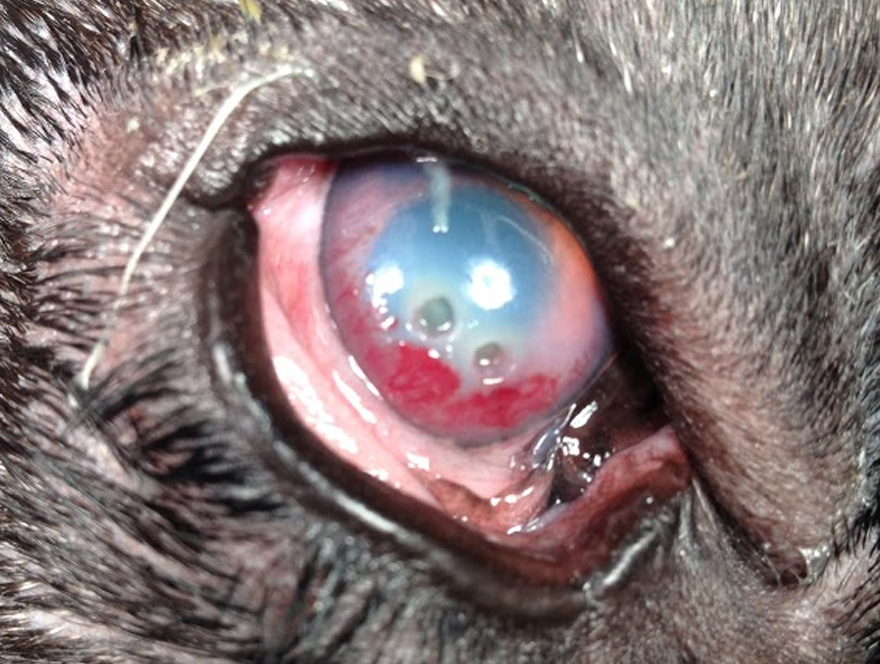
Pet Corneal Ulcers Animal Eye Consultants In Chicago Il

Infected Or Stromal Corneal Ulcers Animal Vision Care Surgical Center
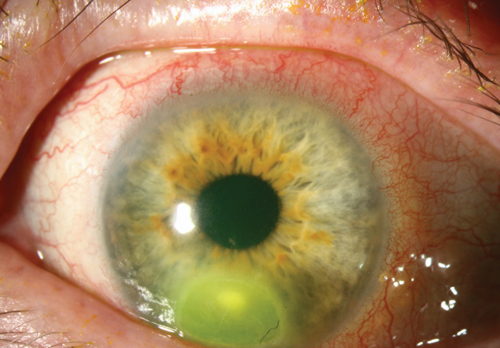
Understanding Corneal Infection Care

Corneal Grafts Davies Veterinary Specialists

Observations In Ophthalmology Corneal Opacities In Dogs Cats
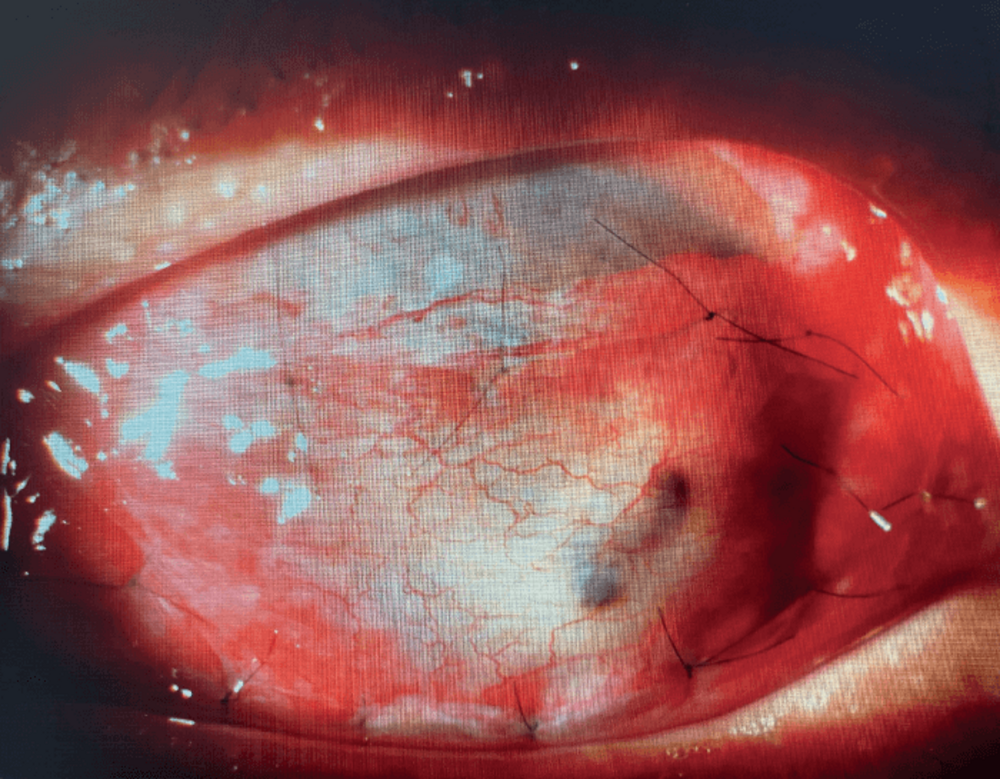
Image Of The Month Gundersen Conjunctival Hooding Flap

Medical And Surgical Management Of Melting Corneal Ulcers Exhibiting Hyperproteinase Activity In The Horse Sciencedirect
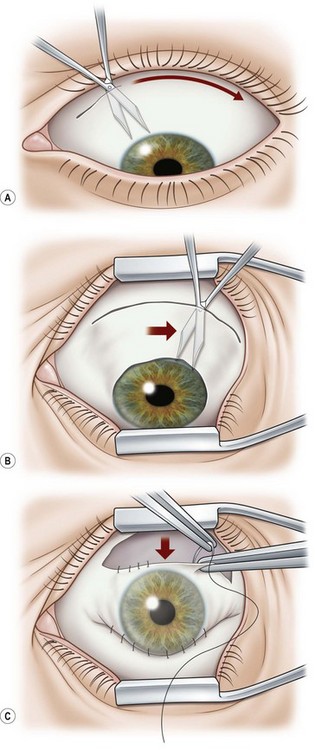
Corneal Surgery Clinical Gate

Case Studies Archives Queenstown Eye Vet

Corneal Ulcers In Dogs Vca Animal Hospital
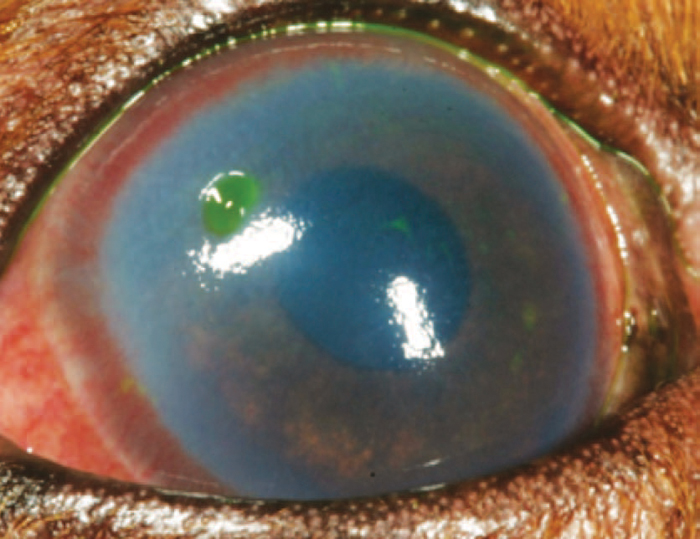
Corneal Ulcers And The Cavalier King Charles Spaniel

Update On Surgical Management Of Corneal Ulceration And Perforation Abstract Europe Pmc
Why Are Conjunctival Flaps No Longer A Recommended Treatment Quora

Mooren S Ulcer Eyewiki

Figure 1 From Rapid Deterioration Of Mooren S Ulcers After Conjunctival Flap A Review Of 2 Cases Semantic Scholar
Corneal Ulcers In Animals Wikipedia

Sight Saving Op Makes Belle Our December Pet Of The Month 387 Vets
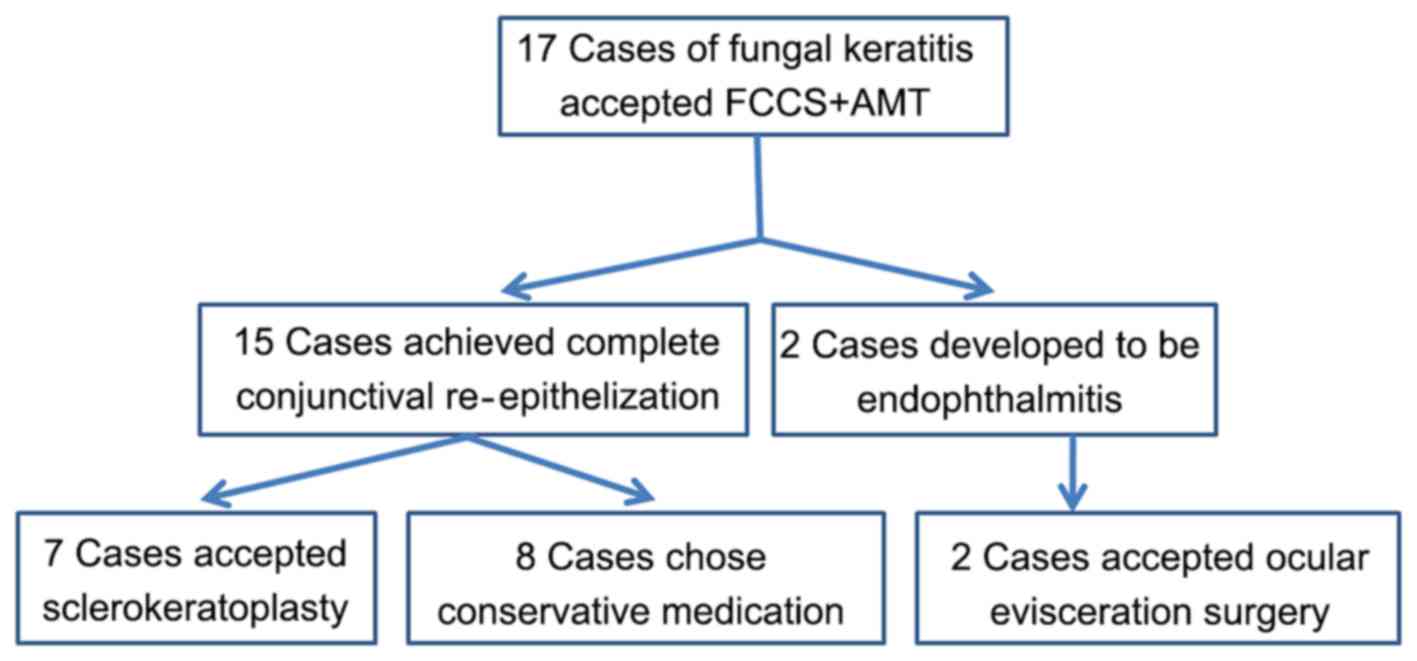
Full Thickness Conjunctival Flap Covering Surgery Combined With Amniotic Membrane Transplantation For Severe Fungal Keratitis
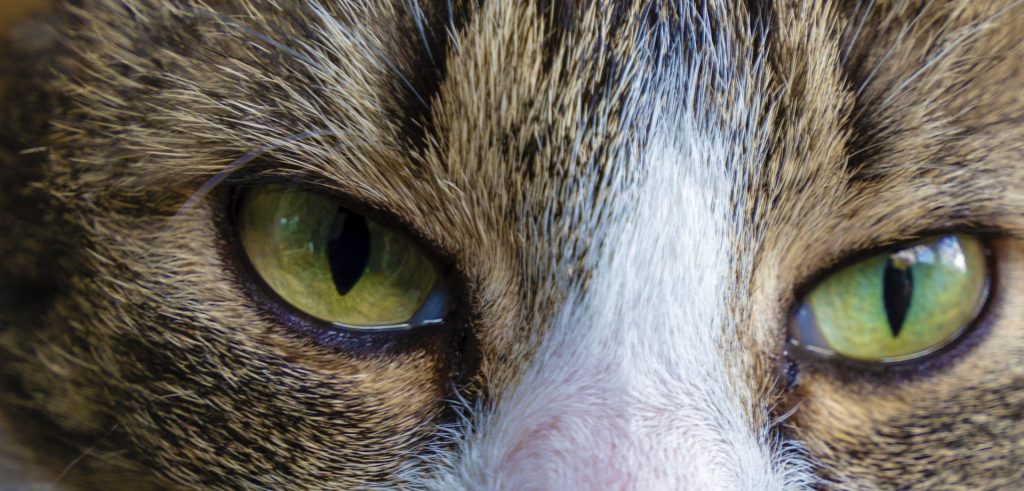
Dog Cat Ringworm Treatment Thornleigh Veterinary Hospital

Deep Corneal Ulceration And Corneal Grafting Procedures
Conjunctival Graft Technique In Dogs Vetlexicon Canis From Vetstream Definitive Veterinary Intelligence
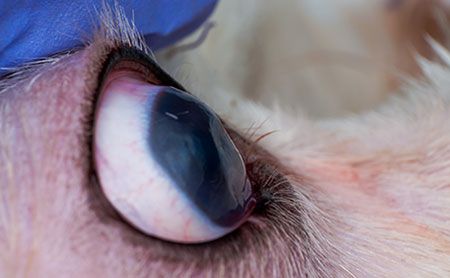
Understanding Canine Ocular Ulcers Dvm 360
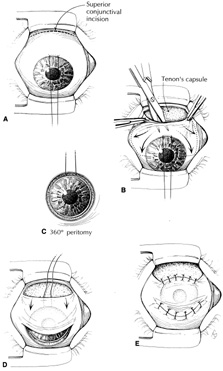
Volume 6 Chapter 33 Conjunctival Flaps For Corneal Disease
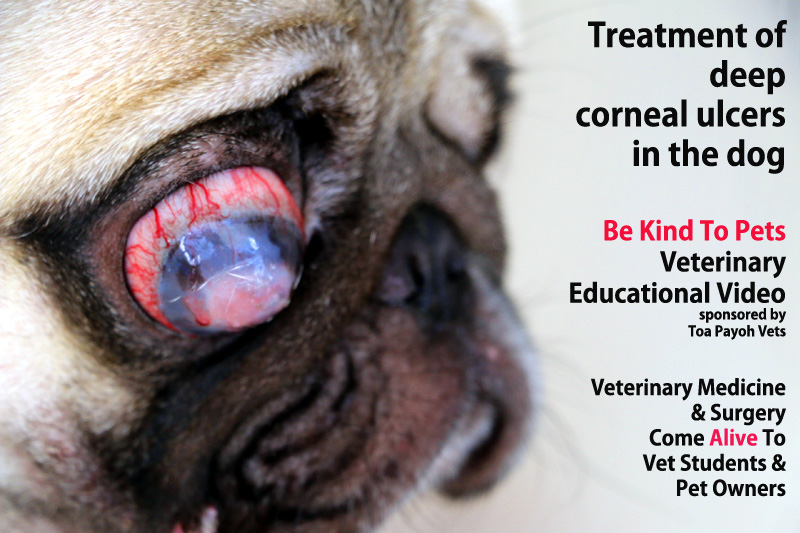
Toa Payoh Vets Singapore

Key Points In Complicated Canine Corneal Ulcers Clinician S Brief
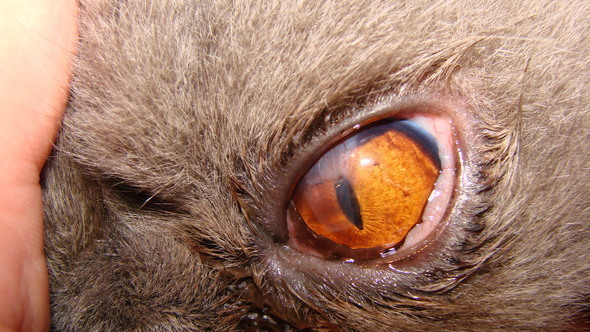
Corneal Grafts At Animal Eye Care

Pdf Repositioning Of Pedicle Conjunctival Flap Performed For Refractory Corneal Ulcer

Full Text Neurotrophic Keratitis Current Challenges And Future Prospects Eb

Pin On Eye Diseases
Conjunctiva Graft Pedicle Flap Technique In Horses Vetlexicon Equis From Vetstream Definitive Veterinary Intelligence

Surgery Of The Cornea And Sclera Veterian Key

Management Of Corneal Perforations An Update Deshmukh R Stevenson Lj Vajpayee R Indian J Ophthalmol

Extended Care Report After Graft Surgery For A Descemetocoele The Veterinary Nurse

Pin By Cullenwebb Animal Eye Speciali On Eye Diseases Corneal Ulcer Corneal Eyes
Why Are Conjunctival Flaps No Longer A Recommended Treatment Quora

Cornea Rodent Ulcer An Overview Sciencedirect Topics

Corneal Ulcers In Dogs And Catsthe Veterinary Expert Pet Health
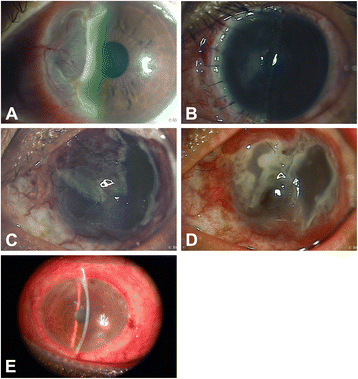
Rapid Deterioration Of Mooren S Ulcers After Conjunctival Flap A Review Of 2 Cases Bmc Ophthalmology Full Text

Canine Pedicle Conjunctival Graft Youtube

Deep Stromal Corneal Ulcers Descemetocele And Iris Prolapse In Animals Emergency Medicine And Critical Care Merck Veterinary Manual

A Modified Technique Of Keratoleptynsis Letter Box For Treatment Of Canine Corneal Edema Associated With Endothelial Dysfunction Giannikaki Veterinary Ophthalmology Wiley Online Library
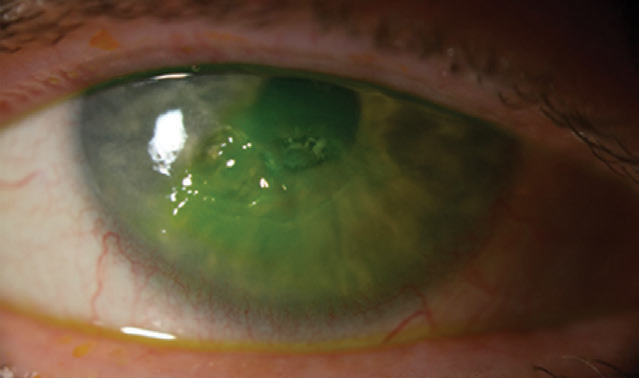
No Pain No Gain

Corneal Ulcers Conley And Koontz Equine Hospital
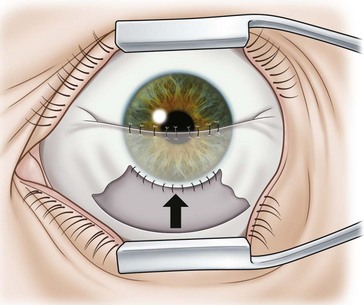
Corneal Surgery Clinical Gate

Figure 1 From Key Facts Management Of Deep Corneal Ulcers Semantic Scholar

Management Of Corneal Perforations An Update Deshmukh R Stevenson Lj Vajpayee R Indian J Ophthalmol
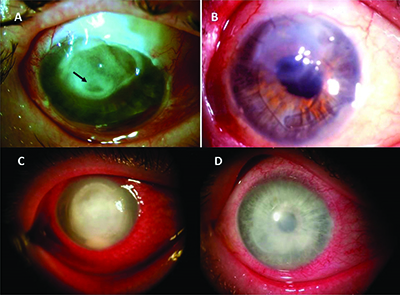
Treatment Options With Amniotic Membrane

Managing Feline Corneal Sequestrum Vetfolio

Sight Saving Op Makes Belle Our December Pet Of The Month 387 Vets
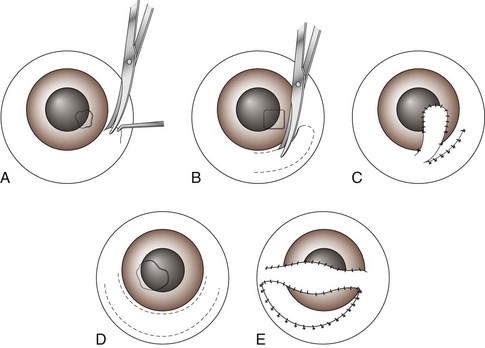
Surgery Of The Eye Veterian Key
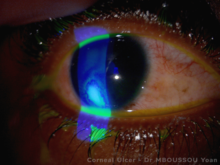
Corneal Ulcer Wikipedia

Slit Lamp Photographs Showing The Treatment Course Of Severe Herpes Download Scientific Diagram

Mooren S Ulcer Eyewiki

Conjunctival Pedicle Flap Following Removal Of Corneal Sequestrum From A Cat S Eye Corneal Eyes Cats
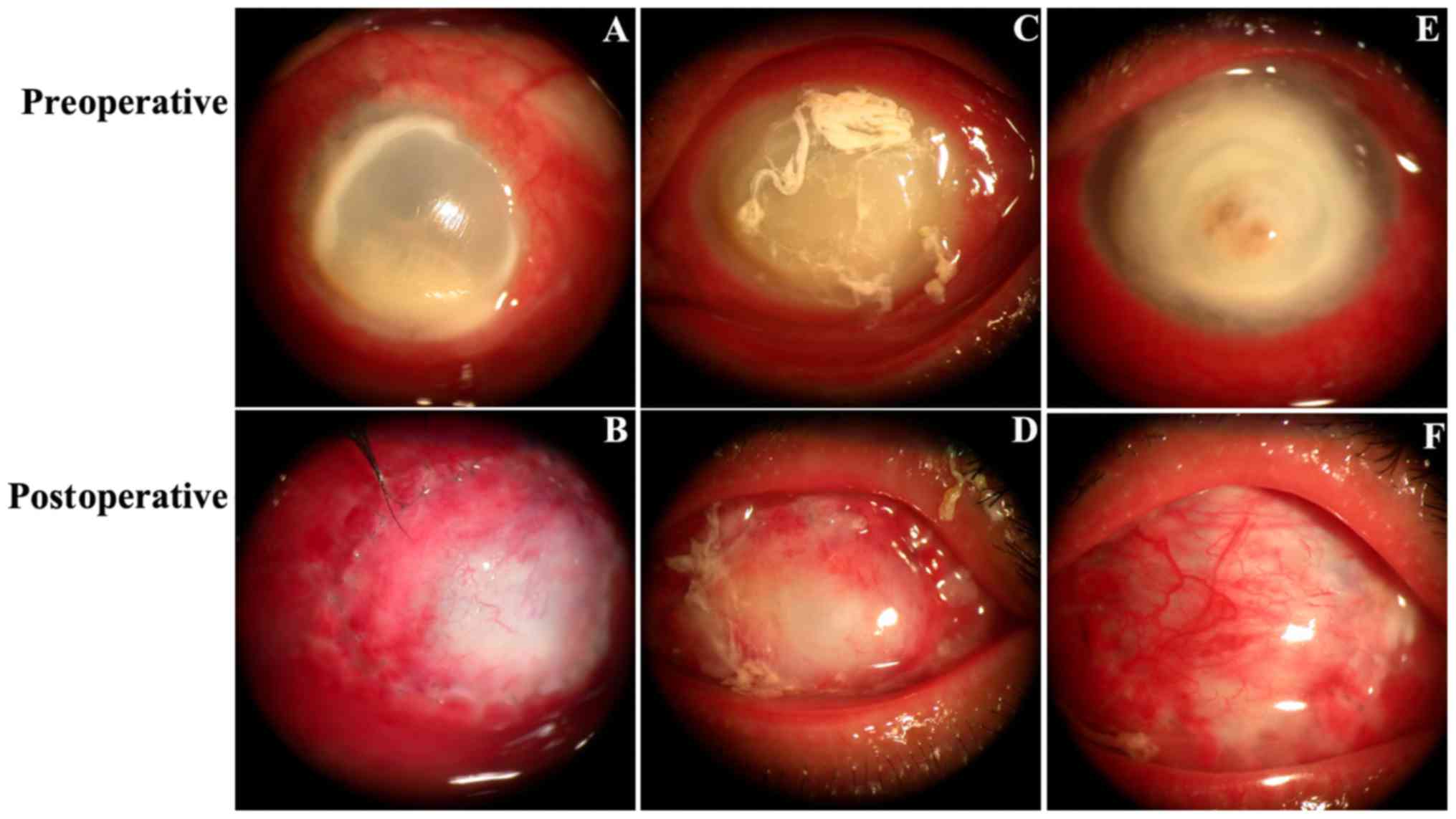
Full Thickness Conjunctival Flap Covering Surgery Combined With Amniotic Membrane Transplantation For Severe Fungal Keratitis

Community Eye Health Journal Managing Corneal Disease Focus On Suppurative Keratitis

Deep Corneal Ulceration And Corneal Grafting Procedures

The Concept Of Corneal Protection Clinician S Brief

Krishikosh Treatment Of Corneal Ulcers With Prp Solid Buffer Combined With Third Eye Lid Flap And Conjunctival Flap In Dogs A Comparative Study

The Concept Of Corneal Protection Clinician S Brief

Feline Corneal Sequestrum Mspca Angell
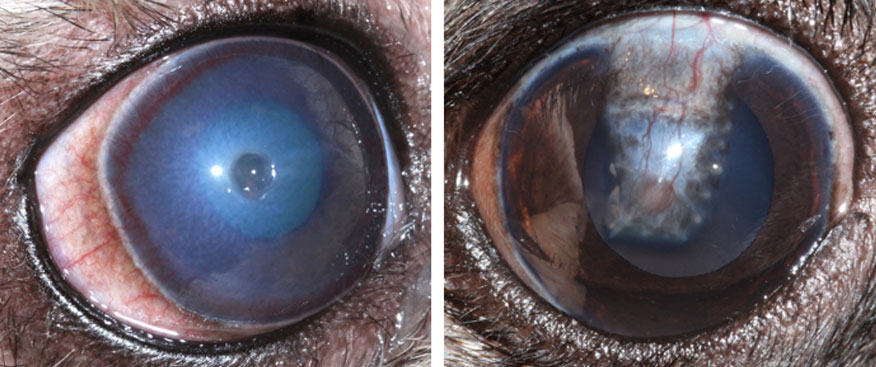
Corneal Surgical Repair

Corneal Grafts Davies Veterinary Specialists
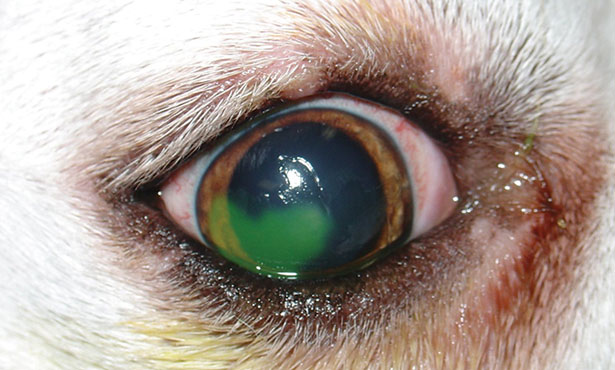
Refractory Corneal Ulcer Management In Dogs Vet Med At Illinois

Emergency Management Of Corneal Ulcers Veterinary Vision

Equine Vision Part Two North Texas Farm And Ranch
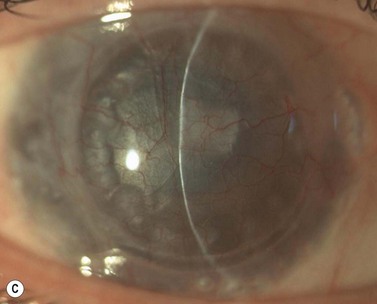
Corneal Surgery Clinical Gate

Clinical Approach To The Canine Red Eye Today S Veterinary Practice
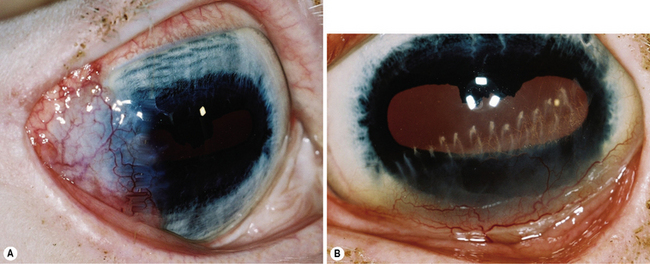
Surgery Of The Cornea And Sclera Veterian Key

Medical And Surgical Management Of Pasteurella Canis Infectious Keratitis Abstract Europe Pmc

J Ophthalmol Ukraine 19 4 18 22 Oftalmologicheskij Zhurnal



